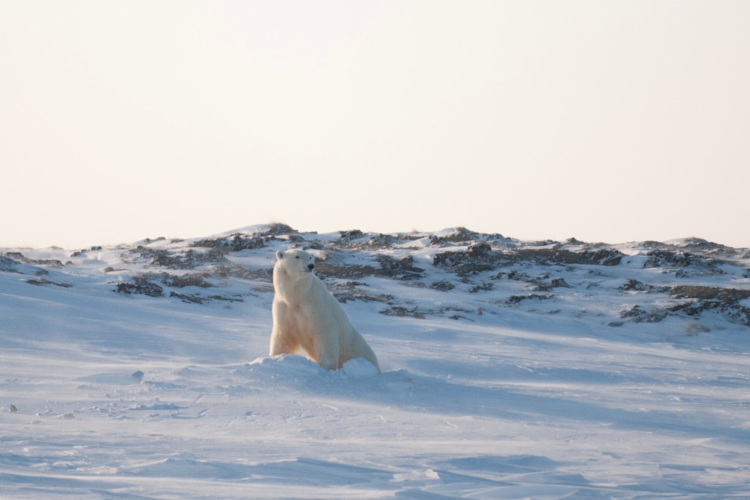Humming, screaming, crying, moaning, groaning, yelping, and gulping. Those are just a few of the vocalizations I heard when observing a mother polar bear and her cubs in their maternal den. But what do these sounds mean and what do they say about how the cubs are doing? That was what I had set out to determine for the staff of Dierenrijk, a zoo near the city of Eindhoven in the Netherlands.
It was my job to describe the observed vocalizations and determine what they meant relative to specific behaviors.
Many zoos house and breed polar bears, but little research has been done on what happens within the den. Furthermore, polar bears are rather quiet creatures and little is known about their vocalizations. I soon discovered that I had a challenging road ahead. Luckily, research on mother-cub interactions allowed some insights. So, armed with a pencil, eraser, and note pad, I donned my earphones and entered the secret world of the polar bear maternal den.
Scientists had the truth of it when they said that the polar bear is a quiet creature; mothers are not very vocal. The cubs, however, didn't get the memo! They offered a symphony of screams turning into cries, moans turning into groans, and more. I was overwhelmed by all the vocalizations that I had to name, describe, and interpret. However, patterns began to emerge after hours of listening to and observing footage of moms and cubs. With help from the zoo community and biologists, I was able to group the vocalizations into five main groups:
1. Distress: Crying and screaming vocalizations heard when the cub could not find its mother, or when the mother shifted her position, unintentionally moving the cub, or when the cub simply "didn't get its way."
Listen to a crying cub.
2. Discomfort: Moaning and groaning, along with some more obscure vocalizations that were often heard when the cub wasn't exactly in a good mood, if it was uncomfortable, if it couldn't find the mother's teat, or was positioned incorrectly.
Listen to a cub complaining.
3. Comfort: This group contained vocalizations that I could only name by the sound: hmm, mmm and uhm. These were always heard when the cub was asleep or had just nursed. From my interpretation, the cub sounded content.
Listen to a contented cub.
4. Nursing attempt: Heard when the cub was trying to get the mother's teat to nurse or when suckling started but the cub lost the teat. It was either a gulping sound or an uh-uh sound. These were always heard before or after nursing.
Listen to the "uh oh" sound.
5. Nursing: One well-documented vocalization was the nursing vocalization called humming. Despite its name, it sounded to me more like a car whose engine won't catch! If you heard this vocalization, you could be sure that the cub was drinking.
Listen to a cub humming/nursing.
Although there were other vocalizations from the cub they were not heard nearly as often as the ones above and they were hard to classify.
This project tried to understand both actions of the cubs and maternal actions. Maternal vocalizations were easier to understand and classify. Maternal vocalizations were split into three groups:
1. Rest: Breathing and snoring, although not technically vocalizations when these were heard I knew the mother was calm and at ease.
Listen to a snoring mom.
2. Stress: This involved panting, heavy breathing and chuffing (a sort of gruff exhalation of air), all of which were interpreted as stress vocalizations. These were heard when the mother seemed to be going through or getting over a stressful situation such as when cubs were crying or screaming excessively.
Listen to a mother panting.
3. Grooming: This was limited to licking sounds. When these were heard it was assumed (when not visible) that the mother was either grooming herself or her young and was therefore at ease.
Listen to grooming sounds.
Other maternal vocalizations were heard infrequently and therefore difficult to classify.
The above results may seem scant for the five months of study it took to gather them but to get this far and have the degree of certainty I have for each vocalization is what took most of the work.
This research offers a new way of monitoring mothers and cubs and ensuring their welfare. By recognizing the vocalizations and being able to associate them with certain behaviors, keepers may gain insight into what is happening within the den. Is the mother overly stressed? Is the cub nursing and comfortable? By being able to answer these questions, the welfare of future mothers and cubs is more secure, and that is ultimately what we are all here for.
Chad van Gessel conducted his study while a fourth-year wildlife management student at the University of Applied Sciences Van Hall Larenstein in Leeuwarden, the Netherlands.

















